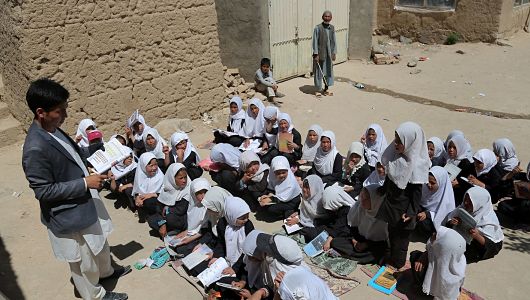US Spends Millions on ‘Ghost Schools’ in Afghanistan

Since 2001, enrollment numbers for education in Afghanistan have increased due to international aid for ‘ghost schools’ from the U.S. as well as other world governments. In 2013, USAID reported that attendance reached eight million students—an immense increase from the 900,000 students in 2002.
So far, the U.S. has spent $769 million on education and ghost schools in Afghanistan in order to increase the number of schools, teachers and students. However, recent reports show the number of students enrolled may be exaggerated, causing many people to question if taxpayer dollars are being wasted.
Canada is not concerned with the allegations and believes the aid makes a difference in enrollment numbers along with the construction of new schools. So how many ‘ghost students’ are attending school?
John Sopko, U.S. Special Inspector General for Afghanistan Reconstruction, reported that Afghan officials counted absent students for enrollment. According to Sopko, the number of absent students in 2014 listed as “enrolled” was 1.55 million students, which means enrollment figures have still increased since 2001.
Despite the allegations or possible exaggerations, aid to education in Afghanistan is still an effective way to increase primary school enrollment numbers.
The U.S. has only spent one percent of its total rebuilding budget in Afghanistan on education. In that time, more than 13,000 schools have been built with the help of USAID and other donors. More than 180,000 teachers have been trained to support higher enrollment for school-aged children. Literacy rates in Afghanistan have increased by five percent since 2008 and about 38 percent of the population above the age of 15 is literate.
Any allegation about false data in the enrollment numbers for education in Afghanistan needs to be taken seriously, but not without recognizing the many successes created in Afghanistan’s education system.
There are many challenges to setting up an efficient educational system in Afghanistan that is sustainable. Due to low economic output and U.S. military involvement in Afghanistan, it is a more difficult environment to work in.
USAID and the World Bank have been working with the Ministry of Education to improve data reliability and improve education policies. The National Education Strategic Plan III that runs from 2014 to 2020 strives to improve education through areas such as General Education, Science and Technology and Teacher Education.
In order to protect investments and the improvements of education in Afghanistan, USAID and other organizations committed to education need to improve the way that data is reported. Also, Aid needs to continue in order to help rebuild Afghanistan and improve the lives of school-aged children within the country.
– Donald Gering
Sources: Globe and Mail, NBC News, NPR, Social Progress Imperative, USAID, Vice News
Photo: The Huffington Post
